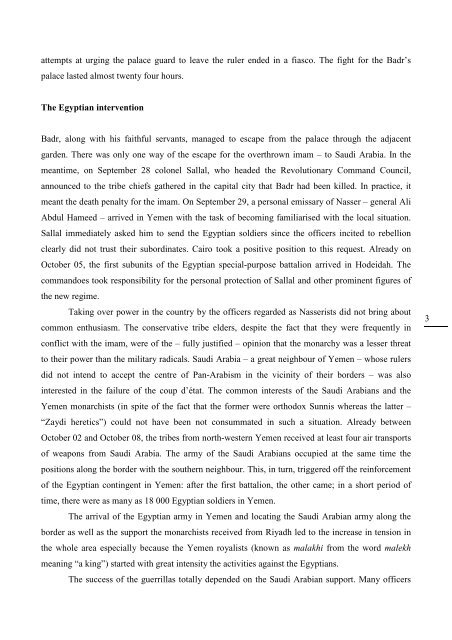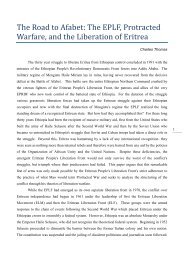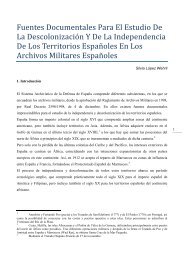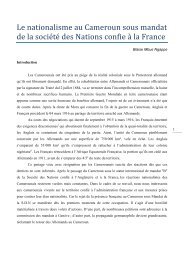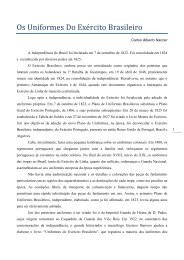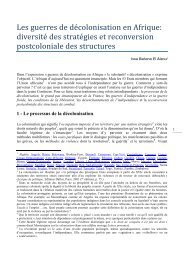96- Rafal Gan-Ganowicz. Polish Hero Of Yemen
96- Rafal Gan-Ganowicz. Polish Hero Of Yemen
96- Rafal Gan-Ganowicz. Polish Hero Of Yemen
Create successful ePaper yourself
Turn your PDF publications into a flip-book with our unique Google optimized e-Paper software.
attempts at urging the palace guard to leave the ruler ended in a fiasco. The fight for the Badr’spalace lasted almost twenty four hours.The Egyptian interventionBadr, along with his faithful servants, managed to escape from the palace through the adjacentgarden. There was only one way of the escape for the overthrown imam – to Saudi Arabia. In themeantime, on September 28 colonel Sallal, who headed the Revolutionary Command Council,announced to the tribe chiefs gathered in the capital city that Badr had been killed. In practice, itmeant the death penalty for the imam. On September 29, a personal emissary of Nasser – general AliAbdul Hameed – arrived in <strong>Yemen</strong> with the task of becoming familiarised with the local situation.Sallal immediately asked him to send the Egyptian soldiers since the officers incited to rebellionclearly did not trust their subordinates. Cairo took a positive position to this request. Already onOctober 05, the first subunits of the Egyptian special-purpose battalion arrived in Hodeidah. Thecommandoes took responsibility for the personal protection of Sallal and other prominent figures ofthe new regime.Taking over power in the country by the officers regarded as Nasserists did not bring aboutcommon enthusiasm. The conservative tribe elders, despite the fact that they were frequently inconflict with the imam, were of the – fully justified – opinion that the monarchy was a lesser threatto their power than the military radicals. Saudi Arabia – a great neighbour of <strong>Yemen</strong> – whose rulersdid not intend to accept the centre of Pan-Arabism in the vicinity of their borders – was alsointerested in the failure of the coup d’état. The common interests of the Saudi Arabians and the<strong>Yemen</strong> monarchists (in spite of the fact that the former were orthodox Sunnis whereas the latter –“Zaydi heretics”) could not have been not consummated in such a situation. Already betweenOctober 02 and October 08, the tribes from north-western <strong>Yemen</strong> received at least four air transportsof weapons from Saudi Arabia. The army of the Saudi Arabians occupied at the same time thepositions along the border with the southern neighbour. This, in turn, triggered off the reinforcementof the Egyptian contingent in <strong>Yemen</strong>: after the first battalion, the other came; in a short period oftime, there were as many as 18 000 Egyptian soldiers in <strong>Yemen</strong>.The arrival of the Egyptian army in <strong>Yemen</strong> and locating the Saudi Arabian army along theborder as well as the support the monarchists received from Riyadh led to the increase in tension inthe whole area especially because the <strong>Yemen</strong> royalists (known as malakhi from the word malekhmeaning “a king”) started with great intensity the activities against the Egyptians.The success of the guerrillas totally depended on the Saudi Arabian support. Many officers3


